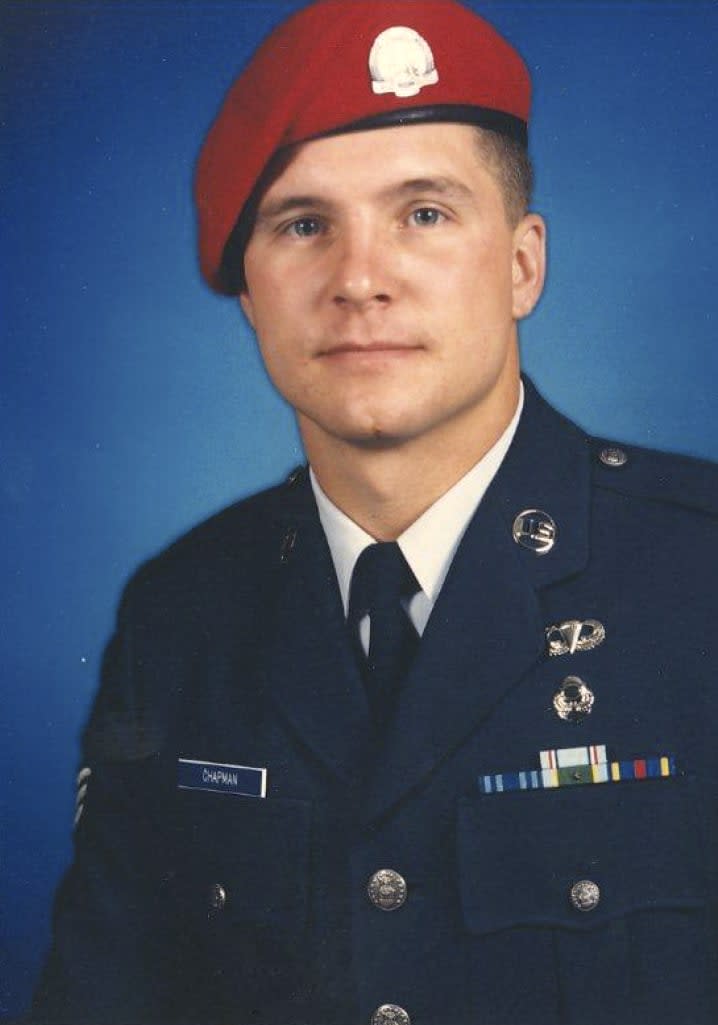Drone footage helps earn Airman posthumous Medal of Honor
Valerie Nessel always believed her husband died heroically.
The 36-year-old Air Force Tech Sergeant, John Chapman was killed on a mountaintop in Afghanistan on March 4, 2002, trying to rescue a Navy SEAL who had fell from a chopper.
On Wednesday, Valerie Nessel’s belief will become the official record when she accepts the country's highest military honor, the Medal of Honor, on Chapman’s behalf.
It will be the first such decoration to be awarded to an airman for actions since the Vietnam War, and the first to use predator done footage and other advanced technology to help piece together the events behind it.
“I knew he did something spectacular,” Nessel told NBC News' Lester Holt in an exclusive interview. “We just never had the proof to prove it.”
"It's going to be surreal, humbling, exciting," Nessel said of accepting the medal.

(John A. Chapman via USAF)
Chapman went to high school outside Hartford, Connecticut, and enlisted in the Air Force in 1985, was a combat controller who was part of a joint special operations reconnaissance team tasked with driving enemy forces from a rugged section of Afghanistan and establishing an observation post on Takur Ghar mountain.
The team's aircraft came under heavy fire, and Navy SEAL Neil Roberts was thrown from a helicopter.
Chapman and other team members returned to find him. The sergeant led the charge through deep snow, attacking two bunkers and killing a pair of fighters before he was mortally wounded by enemy fire. At the time, Chapman's teammates thought he was dead and retreated off the mountain. But Chapman was actually still alive and continued to fight.
Now experts were able to paint a more complete picture of what happened on Takur Ghar. Using witness accounts, radio transmissions, forensics, Predator drone footage, and infrared and pixel technology, the military determined that Chapman was still alive when a chopper came back with reinforcements less than an hour later.
Maj. Gabriel Brown, who was on that helicopter, said Chapman suppressed enemy fire, killing more fighters and allowing the team to land.
“There's no doubt in my mind he stood up,” Brown said. “It [was] corroborated with that technology — pixel lock technology.”
Chapman was killed before the team could rescue him. Seven of them died that day.
Nessel has never seen the new footage and evidence, but the military’s conclusions sounded right to her, confirming her husband's valor and bravery.
“I was like, ‘I knew it’— I knew he would sacrifice himself for the better of the team,” she said, adding, “I think every one of those guys would do the same thing.”
“He would say they all died doing their job,” she said. “It's not just his Medal of Honor — it's for all the men that were killed that day on the mountain.”
